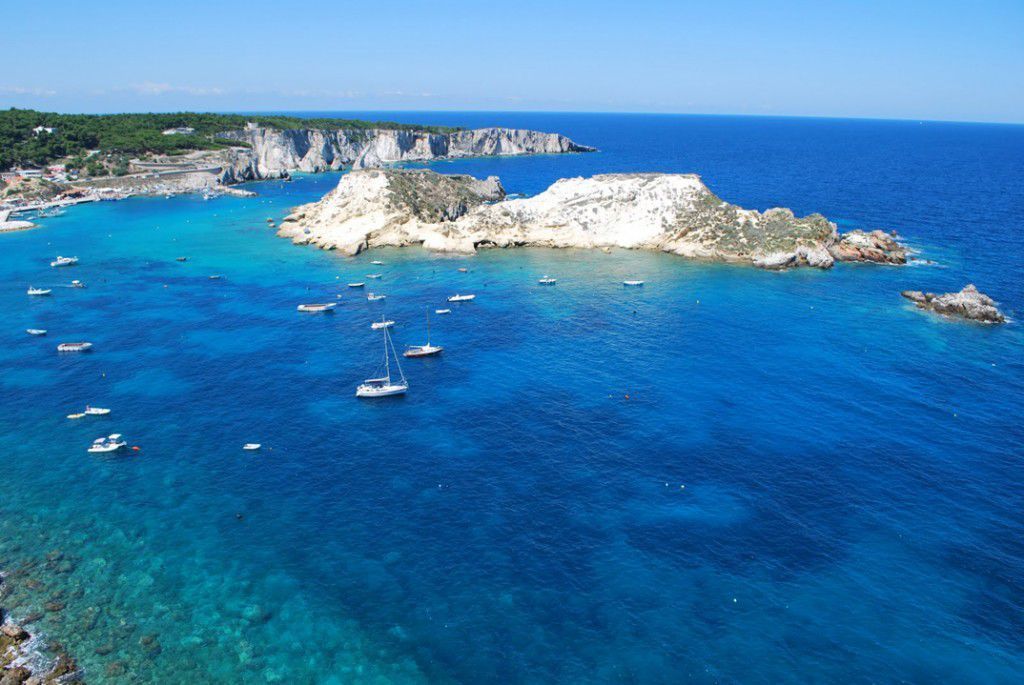“… Soon the train would navigate the sinuous mountain pass and then descend again, powering eastward toward the Adriatic Sea.” This passage describes the moment in which Robert Langdon saw the Adriatic Sea from the window of the Frecciargento high-speed train headed for Venice upon crossing the Apennines.
The Adriatic Sea is part of the Mediterranean Sea. It separates the Italian Peninsula from the Balkan peninsula and the Apennine Mountains from the Dinaric Alps and adjacent ranges.
It extends southward from the Gulf of Venice to the Strait of Otranto, where it connects with the Ionian Sea. It has an approximate length of 500 miles (800 km) and an average width of 100 miles (160 km).
Countries with coasts bordering the Adriatic Sea consist of Italy, Croatia, Albania, Montenegro, Bosnia-Herzegovina, and Slovenia. It contains over 1,300 islands, most of which are located along the eastern coast of Croatia.
Name and history
The name Adriatic has existed since antiquity, and its origins are linked to the Etruscan colony of Adria, which probably derived its name from the Illyrian word adur, meaning “water” or “sea.”
Nowadays the sea has many names, attributed in accordance with the languages of the surrounding countries. These include the following: Albanian: Deti Adriatik; Serbo-Croatian: Jadransko more; Italian: mare Adriatico; Slovene: Jadransko morje; and Greek: Adriatiki Thalassa.
The Adriatic Sea has served throughout history as a source of transportation, recreation, and sustenance. During the Roman period, Brundisium, located on the western shore, and Apollonia and Dyrrachium, situated on the eastern shore, became important ports that were mainly used to transport goods and military troops.
In the Early Middle Ages, the Adriatic’s coasts were ruled by Ostrogoths, Lombards, and the Byzantine Empire; during the High Middle Ages, there were further territorial changes, like the Norman conquest of Southern Italy, the control of a part of the Adriatic off the Croatian coast by the Kingdom of Hungary after a personal union between the two Kingdoms, and the birth of the Maritime Republic of Venice.
During the Modern period and the late 20th century, the Adriatic Sea was the scene of many battles and campaigns, the latest of which led to the annexation of Trieste and its northern area to Italy, guaranteed the independence of Albania, and gave communist Yugoslavia most of the Slovenian Littoral, as well as Istria, the islands of Cres, Lastovo and Palagruža, and the cities of Zadar and Rijeka.
During the Cold War, the Adriatic Sea became the southernmost flank of the Iron Curtain as Italy joined NATO, while the Warsaw Pact established bases in Albania.
After the fall of communism, Yugoslavia broke apart: Slovenia and Croatia declared independence in 1991, with Bosnia–Herzegovina following suit in 1992, while Montenegro joined Serbia to officially form the new state of Serbia-Montenegro.
Geography
The Adriatic Sea is divided into three basins: Northern Adriatic, Central (or Middle) Adriatic, and Southern Adriatic.
The Northern Adriatic basin is the shallowest, rarely exceeding a depth of 100 metres (328 ft). It extends between Venice and Trieste in a line connecting Ancona with Zadar. It is the largest Mediterranean shelf, and is simultaneously a dilution basin and a site of bottom water formation.
The Middle Adriatic basin is deeper than the northen one, with a maximum depth of 270 metres (890 ft). It starts from the Ancona–Zadar line up to the Palagruža Sill, which separates it from the Southern Adriatic basin.
The Southern Adriatic basin is the deepest part of this sea and has a maximum depth of 1.233 metres (4.045 ft). Starting from the Palagruža Sill, it rises to its maximum depth to form the Otranto Sill at the boundary of the Ionian Sea. This basin is similar in many respects to the Northern Ionian Sea, to which it is connected.
Transversely, the Adriatic Sea is also asymmetric. Waters along the west coast of Italy are relatively straight, continuous, and generally low, merging, in the northwest, into the marshes and lagoons on either hand of the delta of the River Po, the sediment of which has pushed forward the coastline for several miles in historic times.
The east coast along the Balkan Peninsula is generally rocky, with over one thousand islands varying in size. Numerous straits form inlets between the islands similar to those of the Norwegian fjords, making up an intricate coastline.
Tourism
The countries bordering the Adriatic Sea are popular tourist destinations. Most tourist accommodation facilities are found in Italy, especially in the Veneto region (around Venice), followed by the Emilia-Romagna region, and then in the Adriatic Croatian counties.
All coastal countries along the Adriatic, except Albania and Bosnia–Herzegovina, take part in the Blue Flag beach certification program, which ensures that beaches and marinas meet strict quality standards including environmental protection, as well as water quality, safety, and services criteria.
Although tourism on the Adriatic Croatian shore has recently exhibited greater growth than the other Adriatic regions, the Italian shore remains one of the favourite destinations for tourists not only for its enchanting beaches but also for its innumerable masterpieces.
One of those is the City of Venice and its Lagoon, as seen by Robert Langdon and his travel companions before arriving at Venice’s Santa Lucia station, located at the westernmost end of the Grand Canal.
Picture by beauty-places.com








